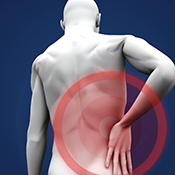Stem Cells from Muscle Repair Nerve Damage After Injury
Stem cells from human muscle tissue were able to repair nerve damage and restore function in an animal model of sciatic nerve injury, according to researchers at the University of Pittsburgh School of Medicine. The findings, published online earlier this month in the Journal of Clinical Investigation, suggest that cell therapy for certain nerve diseases, such as multiple sclerosis, might one day be feasible.
cells from human muscle tissue were able to repair nerve damage and restore function in an animal model of sciatic nerve injury, according to researchers at the University of Pittsburgh School of Medicine. The findings, published online earlier this month in the Journal of Clinical Investigation, suggest that cell therapy for certain nerve diseases, such as multiple sclerosis, might one day be feasible.
To date, treatments for damage to peripheral nerves—the nerves outside the brain and spinal cord—have not been very successful, often leaving patients with pain, decreased function, and impaired muscle control and sensation, said senior author Johnny Huard, a professor of orthopaedic surgery and the Henry J. Mankin Chair in Orthopaedic Surgery Research, Pitt School of Medicine.
“This study indicates that placing adult, human muscle-derived stem cells at the site of peripheral nerve injury can help heal the lesion,” said Huard, who also is the deputy director for cellular therapy, Pitt-UPMC McGowan Institute for Regenerative Medicine. “The stem cells were able to make non-neuronal support cells to promote regeneration of the damaged nerve fiber.”
The researchers, led by Huard and Mitra Lavasani, the study’s first author and an assistant professor of orthopaedic surgery, Pitt School of Medicine, cultured human muscle-derived stem/progenitor cells in a growth medium suitable for nerve cells. They found that, with prompting from specific nerve-growth factors, the stem cells could differentiate into neurons and glial support cells, including Schwann cells that form the myelin sheath around the axons of neurons to improve conduction of nerve impulses.
In mouse studies, the researchers injected human muscle-derived stem/progenitor cells into a quarter-inch defect they surgically created in the right sciatic nerve, which controls right leg movement. Six weeks later, the nerve had fully regenerated in stem-cell treated mice, while the untreated group had limited nerve regrowth and functionality. Twelve weeks later, treated mice were able to regain their gait. Treated and untreated mice experienced muscle atrophy, or loss, after nerve injury, but only the stem cell-treated animals had regained normal muscle mass by 72 weeks post-surgery.
“Even 12 weeks after the injury, the regenerated sciatic nerve looked and behaved like a normal nerve,” Lavasani said. “This approach has great potential for not only acute nerve injury, but also conditions of chronic damage, such as diabetic neuropathy and multiple sclerosis.”
Huard and Lavasani and their team are now trying to understand how the human muscle-derived stem/progenitor cells triggered injury repair. They are also trying to develop delivery systems, such as gels, that could hold the cells in place at larger injury sites.
Coauthors of the paper include the University of Pittsburgh’s Seth D. Thompson, Jonathan B. Pollett, Arvydas Usas, Aiping Lu, Donna B. Stolz, Katherine A. Clark, Bin Sun, and Bruno Péault.
Other Stories From This Issue
On the Freedom Road

Follow a group of Pitt students on the Returning to the Roots of Civil Rights bus tour, a nine-day, 2,300-mile journey crisscrossing five states.
Day 1: The Awakening
Day 2: Deep Impressions
Day 3: Music, Montgomery, and More
Day 4: Looking Back, Looking Forward
Day 5: Learning to Remember
Day 6: The Mountaintop
Day 7: Slavery and Beyond
Day 8: Lessons to Bring Home
Day 9: Final Lessons

